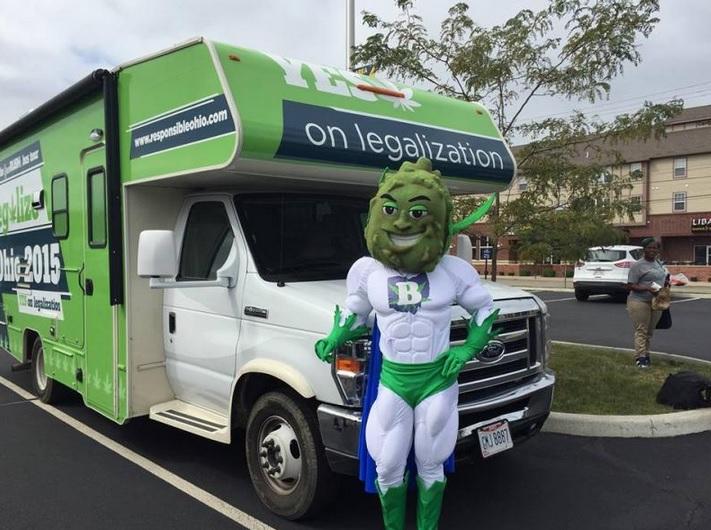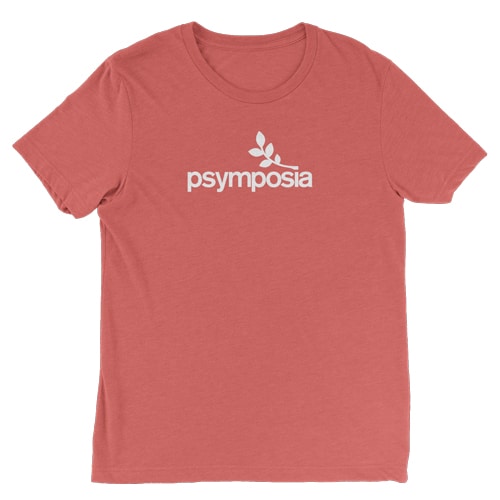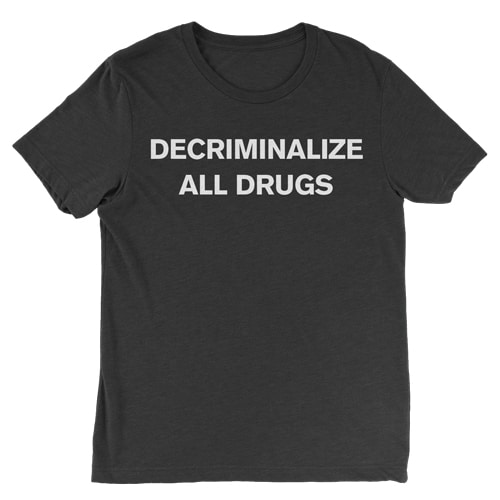Why I Opposed Half-Baked Legalization in Ohio
Legalization should mean everyone has the right to grow, not just some people or corporations with money looking to profit.

Psymposia is a 501(c)(3) nonprofit research and media organization that offers critical perspectives on drugs, politics, and culture. We rely on contributions from our readers and listeners. Your support is vital to sustaining Psymposia.
Support Psymposia’s independent journalism on Patreon and help us drive the Mystery Machine! We’re a bunch of meddling kids who are unmasking the latest shenanigans on the psychedelics beat.
Sixty one-percent of Americans support marijuana legalization, and five states will vote on it in 2016. It is easy to feel as though the takeover of cannabis is inevitable, but what will legalization look like when it is all said and done? Let’s take a look at what 2015 can teach us about the crucial questions we should be examining heading into the election season. Namely, is the “anything over prohibition” strategy outdated?
The 2015 ResponsibleOhio constitutional ballot campaign hoped Ohioans would jump at the chance to be the first state to move from prohibition to a full legal market; however, a significant portion of voters questioned the details of the amendment. Had it been successful, the exclusive right to both medical and adult use cannabis cultivation for a state of 11.6 million would lie with the owners of 10 recently purchased farms – owners who happen to have bankrolled the campaign.
Ohio voters were uniquely primed to question such a scheme due to the fact that this same group and affiliates had similarly poured $50 million into legalizing gambling in Ohio years earlier, securing themselves ownership over the only legal casinos. Had this trend of corrupting Ohio’s constitution for profit continued, how much influence could this group buy in the Ohio legislature with their profits? Might they lobby for lax regulations around advertising, which could damage prospects of later legalizing other, less popular drugs?
Individuals and organizations understandably had a difficult time determining how to weigh the positives and negatives. The ACLU of Ohio ultimately backed ResponsibleOhio, claiming it would be Ohio’s only chance at improving cannabis law for the next 10-20 years. Fast-forward to the summer of 2016 and Ohio’s legislature has passed a limited medical cannabis program. This anecdote demonstrates why we must question whether “anything over prohibition” arguments hold water as the drug policy reform wave begins to crash.

Recent articles such as America’s Whites Only Weed Boom and The Failed Promise of Pot outline ways in which the legalization of cannabis is falling short. In some cases people of color continue to land in prison for the same activities their white counterparts now enjoy the privilege of participating in legally. Colorado provides an example: new data show youth of color are experiencing an increased volume of cannabis arrests, while the rate for their white counterparts has decreased.
These experiences demonstrate the seriousness with which we must consider refocusing on legalization (or at least decriminalization) for ALL – not solely adults, not solely for those who can afford inflated prices and regressive excise taxes, not solely for those with a war chest big enough to apply for ownership, and not solely for those with the lack of rap sheet required to secure a position within the legal industry.
We think nuanced policy discussion will drive people away, and thus, we water down our policies and dumb down our messages to make them compatible with the media’s stereotype of the American voter. We place our policies on the safe side of polling rather than doing the harder work of crafting quality policy with community input and building support around it. In recent Ohio campaigns, the grassroots community strategies often seem to come secondary, if at all, to strategies focused on funding. I watched as a state with over majority favoring full cannabis access only came out 36% in support due to crony policy and campaigning that failed to engage the grassroots. Nuanced policy discussion was started by unfunded grassroots opposition and spread through communities – something that seems to rarely happen in campaigns which emphasize sound bites and catchy slogans.
Do we really want to “regulate marijuana like alcohol”? I get the political reasons for a campaign name such as this, but I don’t know that we critically consider its implications. Are we selling ourselves short by failing to consider that perhaps we should instead be holding our ground in regulating cannabis with evidence-based harm reduction principles, setting an example which could eventually lead us to regulate alcohol more like cannabis?
When we cede good policy to political expediency, there are collateral consequences. Policy change is not linear, and it is not always easy to alter policies, laws, and constitutional amendments. It is even more difficult to do so after a profitable industry and lobbying forces have been built around the object of regulation. Once the industry is established, they will dictate more policy, because moneyed players do that in an oligarchic society.
Campaigns and lobbying efforts that come under undue influence from business suffer from a lack of intuition when it comes to handling policy and campaigns. ResponsibleOhio’s green rush blinders prevented them from heeding to warnings about the irresponsible nature of utilizing a cannabis mascot, for example. They completely ignored advice from national cannabis policy professionals in favor of a marketing ploy that was widely seen as the dreaded “Joe Camel of weed” – or in other words, prohibitionist ammo. Investors take on monetary risk and bring certain skills to the table, but what about the risks to life and liberty taken and policy/campaign expertise developed by the Movement, which made it possible to provide cannabis access under prohibition and move us to the point where legal markets are possible?

None of this is to say we should not partner with business and, realistically, our organizations and campaigns need funding partners. But we must be selective in who we partner with and in what concessions we are willing to make. With collective labor and social enterprise, business can be a tool to foster community and unravel the social and economic injustices produced by the war on drugs. But with oligopolies, business instead reproduces those same injustices.
A major reason many of us joined the drug reform movement is due to its infectiously intersectional nature; for me, it’s what makes us one of the most critical elements of today’s civil rights movement.
It’s high time to form a more updated, holistic, and progressive strategy. Our focus should be sound, harm-reductionist drug policy that is going to contribute to a sustainable trajectory leading to the legalization of drugs beyond cannabis. We need to get back to the fundamentals and focus on rights, which are more universal. Does, for example, focusing on patients – who are perceived more politically salient than prisoners – cheapen our intersectional policy aims? If we frame the issue as being a medical one, does that make it more difficult to convince people it’s about freedom? Are we concerned about our environmental impact?
Anyone who has picked up Michelle Alexander’s The New Jim Crow has some understanding of how reforms, such as the abolition of slavery and the establishment of civil rights, have been crafted in deceitful ways which repackage the same human rights abuses. We must get in the business of critically thinking about the holistic effects of our policies, and we must anticipate the ways prohibitionists will subvert drug policy reform to preserve current power structures – after all, it was never about the drugs and it has always been about the power.
I was disappointed with the timid conversation I heard within Reform circles leading up to the 2015 Ohio election. I understand why many individuals and organizations hesitated to outright oppose the measure; it was no easy thing for anyone, no matter where one came down. However, I believe we might have a clearer sense of how to proceed in the future if we force ourselves to have more difficult conversations – not only within an article here and there or during a single session at national conferences. As valuable as those spaces are, we need more. I am hopeful because some of our leaders and the new generation of reformers (shout out Psymposia and SSDPers!) are committed to facilitating these conversations regularly. I certainly do not have all of the answers, nor do I expect our leaders to. I simply want them to ask the questions.
Hey! Before you go… Psymposia is a 501(c)(3) non-profit media organization that offers critical perspectives on drugs, politics, and culture. We strive to ask challenging questions, and we’re committed to independent reporting, critical analysis, and holding those who wield power accountable.
Our perspectives are informed by critical analysis of the systemic crises of capitalism that have directly contributed to the unmitigated growth of addiction, depression, suicide, and the unraveling of our social relations. The same economic elite and powerful corporate interests who have profited from causing these problems are now proposing “solutions”—solutions which both line their pockets and mask the necessity of structural change.
In order for us to keep unpacking these issues and informing our audience, we need your continuing support. You can sustain Psymposia by becoming a supporter for as little as $2 a month.
Cassie Young
Cassie Young manages a child support grant project and recently graduated from the Ohio State University with master's degrees in social work and public policy and management, having served as president of the OSU chapter of Students for Sensible Drug Policy (SSDP).





